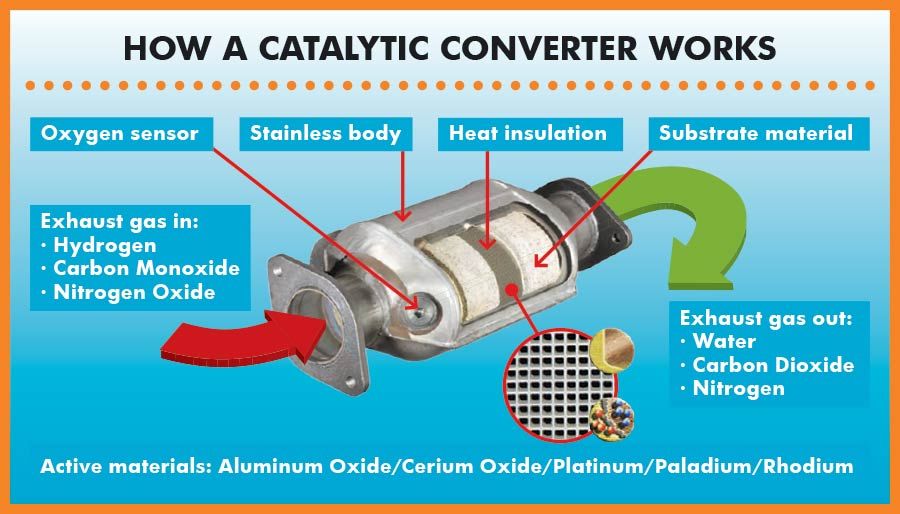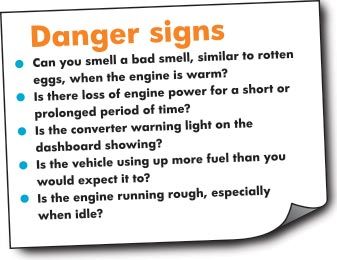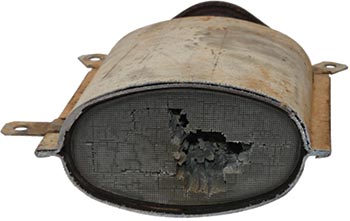What does a catalytic converter do?
Catalytic converters are mounted in the exhaust system to minimise the emission of harmful pollutants. Combustion engines produce gases such as carbon dioxide, carbon monoxide, hydrocarbons, and oxides of nitrogen which can be poisonous or carcinogenic.
These pollutants are harmful to both human health and the environment. The converter substrate creates a chemical reaction between these gases converting them to other relatively harmless substances like carbon dioxide, nitrogen and water.
Oxygen sensors mounted in the exhaust monitor the oxygen in the exhaust gases before and after the converter and send electronic signals to the engine management system which then adjusts fuel mixture to reduce air pollution.
Why it cannot be removed
Removing the converter does not save fuel. In fact your car will probably use more fuel as the engine management system will think the converter is in "start up" mode and so send more fuel.
Your engine management system continually adjusts the air-fuel mixture based on oxygen sensors before and after the catalytic converters. A blocked or damaged catalytic converter sends wrong signals to the management system, effecting vehicle performance and efficiency.
Damage or failure
Extreme temperatures, engine vibration, movement and chemical reactions put enormous stress on catalytic converters. If restricted oxygen sensors indicate a lean reading so the management system adds more fuel until the problem is rectified. In extreme cases, such as blocked substrate, the engine loses power and will stop. Catalytic converters also simply wear out and need to be checked as part of your vehicle service programme.














